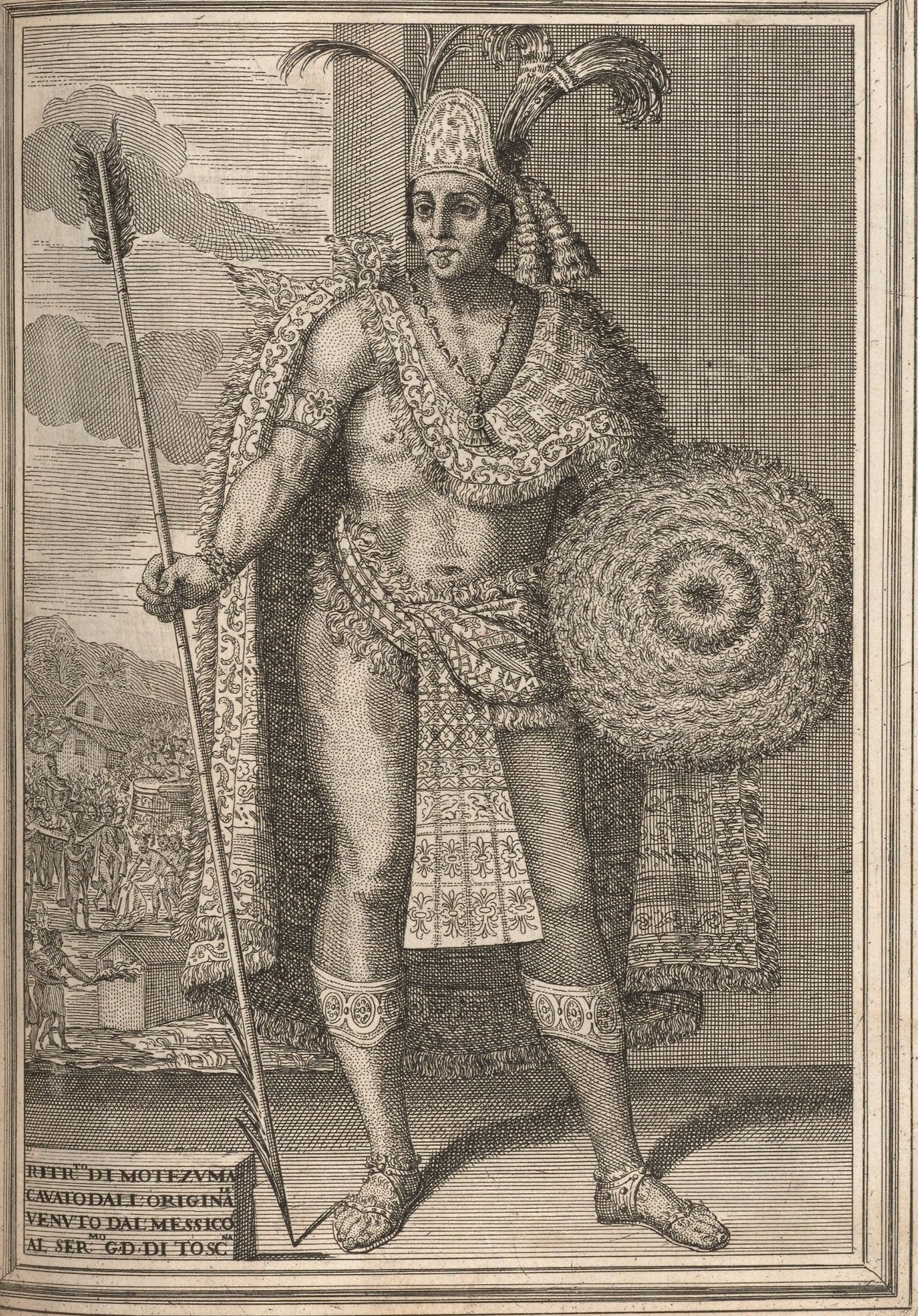Death had surrounded the Aztec capital of Tenochtitlan for two years since the arrival of the Spanish under Hernán Cortés. Initially, the foreigners had been greeted as welcome visitors (some even said gods, avatars of the feathered-serpent, Quetzalcoatl). Tensions increased as the Spanish were given tribute, allowed to steal more, then refused to pay for what had been gifts of food, water, and lodging. Montezuma had shown them the power of his empire and tried to learn what weaknesses he could of the Spanish to defeat them.
On the Spanish end, Cortés plotted conquest. He learned much of the Aztec way of life, specifically the system of tribute and treaties that cobbled together the empire. The Crown and Governor Velazquez had not granted him this power, and Velazquez had even sent Narvaez with an army of a thousand men to return the rogue conquistador. Cortés met with Narvaez under the guise of peace, kidnapped him, and assumed command of the army, bribing them with promises of Aztec gold.
While Cortés was gone, the conquistadors in Tenochtitlan had misunderstood the wild celebrations of the Aztecs as a potential war gathering and massacred untold hundreds in preemptive self-defense. A rebellion broke out to destroy the Spanish, but Cortés returned and joined with Montezuma to quell them. Though they were allies for the moment, the two quickly began to plot to eliminate the other.
The next year gave devastation to the Aztecs. A slave among Narvaez's men carried smallpox, and the “huey ahuizotl” (great rash) broke out in the city and countryside, killing upwards of forty percent of the population, including the new king following Montezuma, Cuitláhuac. Famine approached the next year as so many of the Aztecs were ill and could not work the fields. In all of the chaos, Cortés plotted and gathered supplies.
In May of 1521, Cortés and his allies began their siege of Tenochtitlan. He used ships that had been scuttled at the end of the voyage from the Caribbean and newly built ones to cross the lake and canals of the city. Cuauhtémoc, the new king, fought back, stopping the invasion and beginning a stalemate in naval combat across the canals. Traps of spear-filled pits, battles over causeways, and ambushes traded small victories, but the Aztecs were running out of food, and the Spanish crept closer.
At last, the Cuauhtémoc decided to use a new strategy he had learned from the Spanish: outright lying. On August 13, he feigned surrender and threw open the last bastions of his city. The conquistadors and their allies marched in, parading under the view of the citizens of Tenochtitlan on rooftops. Just as Cortés approached the king, Tlapaltecatl Opochtzin leaped out dressed in ceremonial owl warrior garb and plunged a dart deep under the helmet of the conquistador. The Aztec warriors began assaults from the buildings all around the invaders, who were caught almost defenseless. Panic struck the Spanish, and their allies deserted them.
The slaughter continued until nightfall when the last few Spanish surrendered and were executed by stoning. A small force Cortés had left behind were able to slip back to Vera Cruz, escaping into the open sea and returning to Spanish colonies. Over the rest of the summer, Cuauhtémoc punished the allies of the conquistadors and affirmed his rule.
With the Aztecs affirmed, the Spanish moved their colonial domain southward, giving more attention to Andes mines and attempting to maintain peace with the powerful Aztec in the north. Over the course of the next centuries, the Aztec would distrust outsiders but still trade with them, gaining black powder weapons from Dutch, French, and English who wished to keep the Spanish Empire from expanding. Careful laws kept the loyal Aztec army armed and the slave city-states suppressed while destroying any European force that threatened Aztec borders. Later, in the 1700s, Aztecs began imperial expansion of their own northward, massacring great numbers of Pueblo and Plains Indians while establishing colonies.
In the early 1800s, the Aztec ran into another expansionist force: the United States of America. In the 1830s, American settlers encroached on Aztec lands west of the Mississippi, and war broke out, lasting from 1836 to 1848. After the Aztec War, Americans had gained great swaths of the southwest in the state of Jefferson (north of the Grand River), Montezuma Territory, and Polk (where gold was discovered in 1849, leading to rapid settlement). The Aztec Empire collapsed after the taking of Tenochtitlan by US Marines, giving way to fractured small city-states.
The small countries met with mixed fortunes: some prospering on their own, others succumbing to European colonialism (many seized by France under the rule of Napoleon III), and a few even going on to join the United States in later years. Today Meso-America, as the former Aztec nations and various former colonies north of Columbia are called, stands as a developing region continuing in mixed fortunes of tourism, industry, drug cartels, and warfare.
–
In reality, Cortés had defeated the Aztec king with his political maneuvers and hundreds of thousands of allies. Upon the surrender of Cuauhtémoc, he was taken hostage and later executed by the conquistadors. Looting and killing surrounded the city for days afterward, but eventually the havoc would settle, and Mexico would remain unified as an important Spanish colony.

Where would Bernardino de Sahagun and the Florentine Codex fit in this version of the world? Would the Aztec allow him to study their culture and create his magus opus similar to the real world, or would they have banned him from their lands due to his Spanish roots?
ReplyDeleteMore likely banning him, unless he could bribe his way in somehow.
ReplyDelete